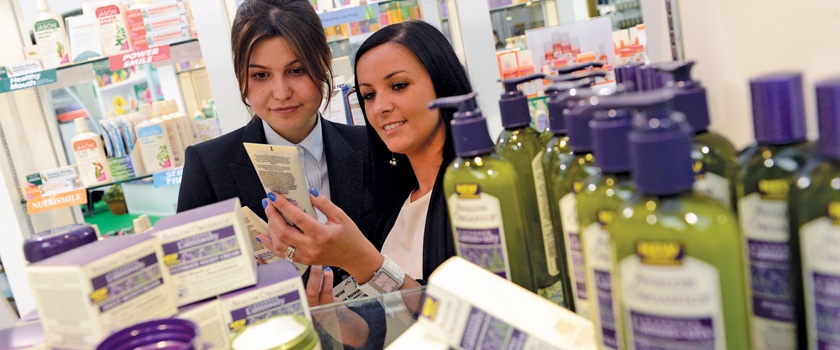Growing consumer interest in all things ‘indie’ natural and organic has produced record levels merger and acquisition (M&A) activity in the beauty and personal care sector, according to data from Catalyst Corporate Finance.
Around 80 deals have been struck for the year to date, continuing the very high levels of activity seen in 2015 and 2016, says Catalyst.
Activity is being driven by trade corporates and an increasing community of investors focusing on the sector. Average valuations have hit their highest level as trade corporates look to brands that are growing quickly in modern channels or evolving product categories. Private equity meanwhile is recognising the potential returns available through supporting brands with a genuine point of difference.
Catalyst partner, Matt Wiseman, an adviser to the personal care and beauty sector has identified the key trends that have underpinned M&A activity in the industry, driving interest from acquirers, during the course of 2017:
1. High growth in ‘indie’ brands attracting large corporate buyers
There has been a lot of PR coverage in 2017 of ‘indie’ brands growing at the expense of the traditional corporate powerhouses, particularly in modern, direct-to-consumer channels. Brands such as Glossier, Anastasia Beverly Hills and Deciem (invested in by Estée Lauder during 2017) are leading the charge, achieving triple-digit year-on-year sales growth and illustrating the growth achievable by brands that are able to create passion and engagement amongst their consumer community. The closure of the Estée Edit brand after only one year demonstrates it is not easy for even the strongest corporates to mimic such brands themselves. Unilever’s acquisitions of Hourglass and Carver Korea are good examples of a large corporate prepared to pay premium valuations for strategically important brands.
2. Increased competition amongst private equity investors
For many years, private equity investments in the beauty sector have been led by experienced, focused firms such as TSG Consumer, Tengram Capital Partners and L Catterton. Driven by the high sales growth rates and sales-based multiples available for successful brands, competition to invest in the sector has increased during 2017 and new entrants Ares (Devacurl) and Main Post Partners (Milk Makeup) have made their first investments in the sector. This has led to investors looking to support brands at an earlier stage in their growth cycle, as seen with CAP Invest backing Pai skincare, Calculus Capital investing in Cornerstone men’s grooming, and Unilever Ventures taking stakes in True Botanicals skincare and Nutrafol hair growth vitamins.
3. The natural / organic beauty movement
Consumers are increasingly aware of the impact of applying chemicals to their skin and their absorption into blood streams. Brands with a natural and/or botanically derived orientation now represent the largest combined share of prestige skin care sales and have accounted for all growth in the category in 2017. The number of acquisitions of skin/body care brands with a natural/organic proposition has increased significantly in recent years from eight across 2013 and 2014 to 37 between January 2015 and September 2017. Brands with genuine natural credentials such as Drunk Elephant, Indie Lee, Pai and Native deodorants have been invested in or acquired during 2017. As the consumer becomes savvier, brands with true integrity to their ingredients sourcing and natural proposition are the best positioned to gain trust and thrive, and attract buyer interest.
4. Influencer-driven growth through social media
For smaller, younger brands there is a growing network of credible yet accessible makeup artists with a significant social media following able to drive engagement towards their brand and achieve growth rates previously unattainable when reliant on the shelves of prestige and mass retailers. Brands that can create genuine excitement and engagement with consumers on social media can grow and become very attractive very quickly. The success of Charlotte Tilbury (investment from Sequoia Capital) and Huda Beauty (considering investment) within five years of launch show the potential growth available.
5. Retailers differentiating their offer through owned brands
Online and offline retailers are looking to differentiate their offer to consumers through acquiring brands they can support and to which they can offer premium shelf/online display. Following recent year acquisitions by Walgreens Boots (Liz Earle, Soap & Glory), Holland & Barrett (Dr Organic) and Target (Sonia Kashuk), 2017 has seen The Hut Group add ESPA and Illamasqua to its owned brand portfolio. These retailers typically have vast amounts of data available to determine brands to acquire and the high margins and fast-growth achievable enable strong valuations to be paid.
Catalyst’s Matt Wiseman added: “The personal care and beauty sector has proven to be very resilient in times of economic challenge. M&A activity and valuations have been very strong in 2017 buoyed by acquisitive trade corporates and an increasing appetite amongst private equity firms. This trend is fully expected to continue in 2018.”











